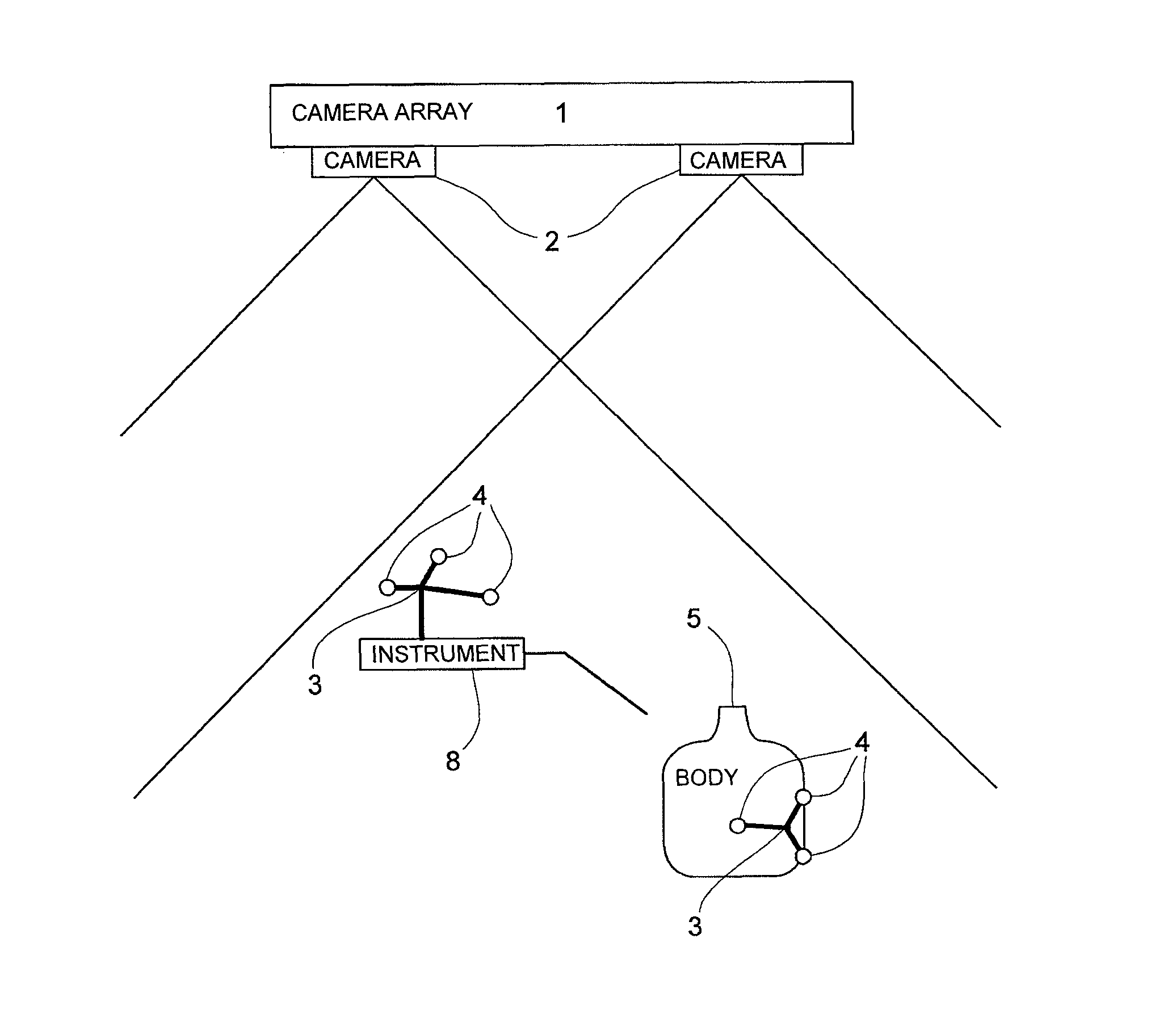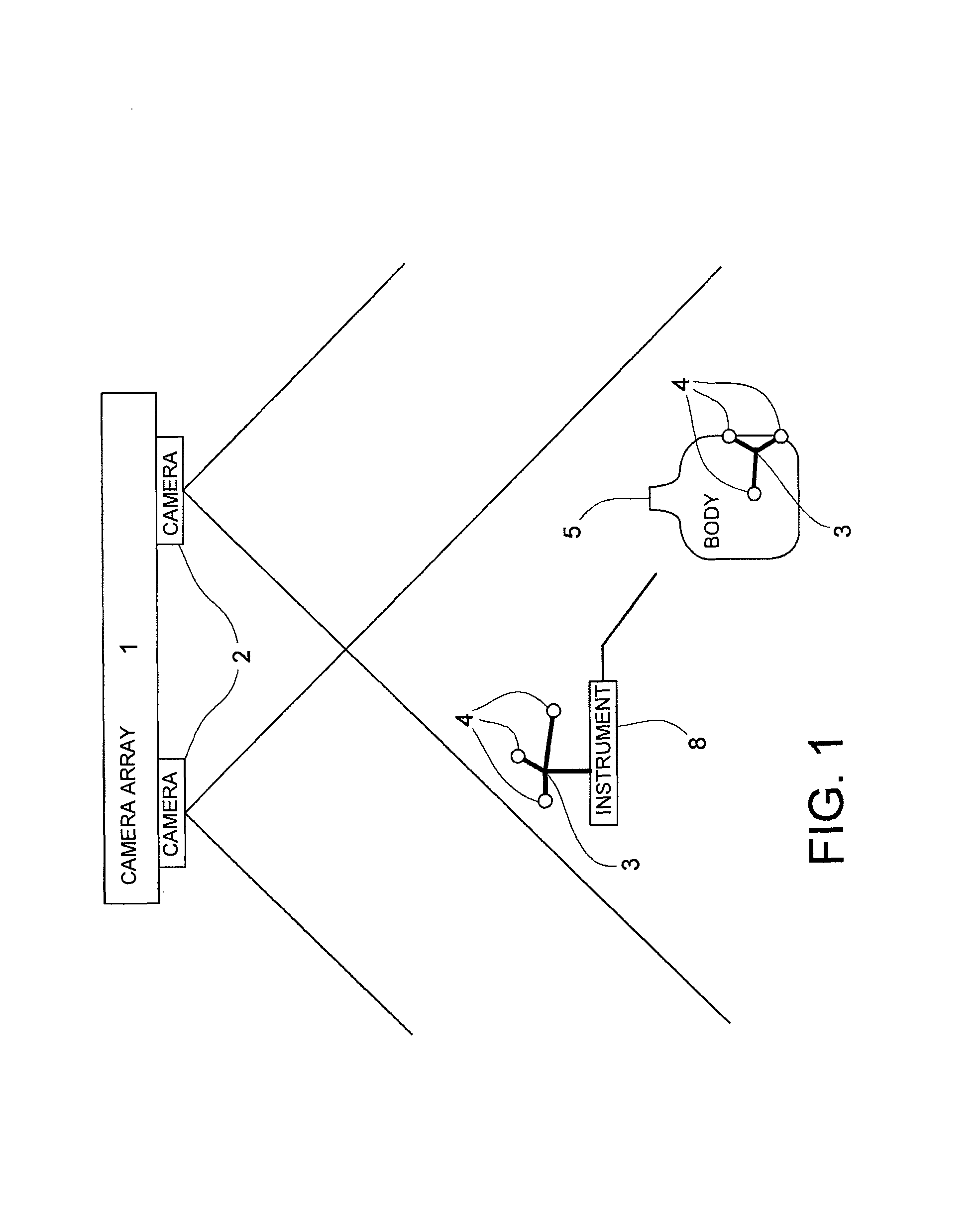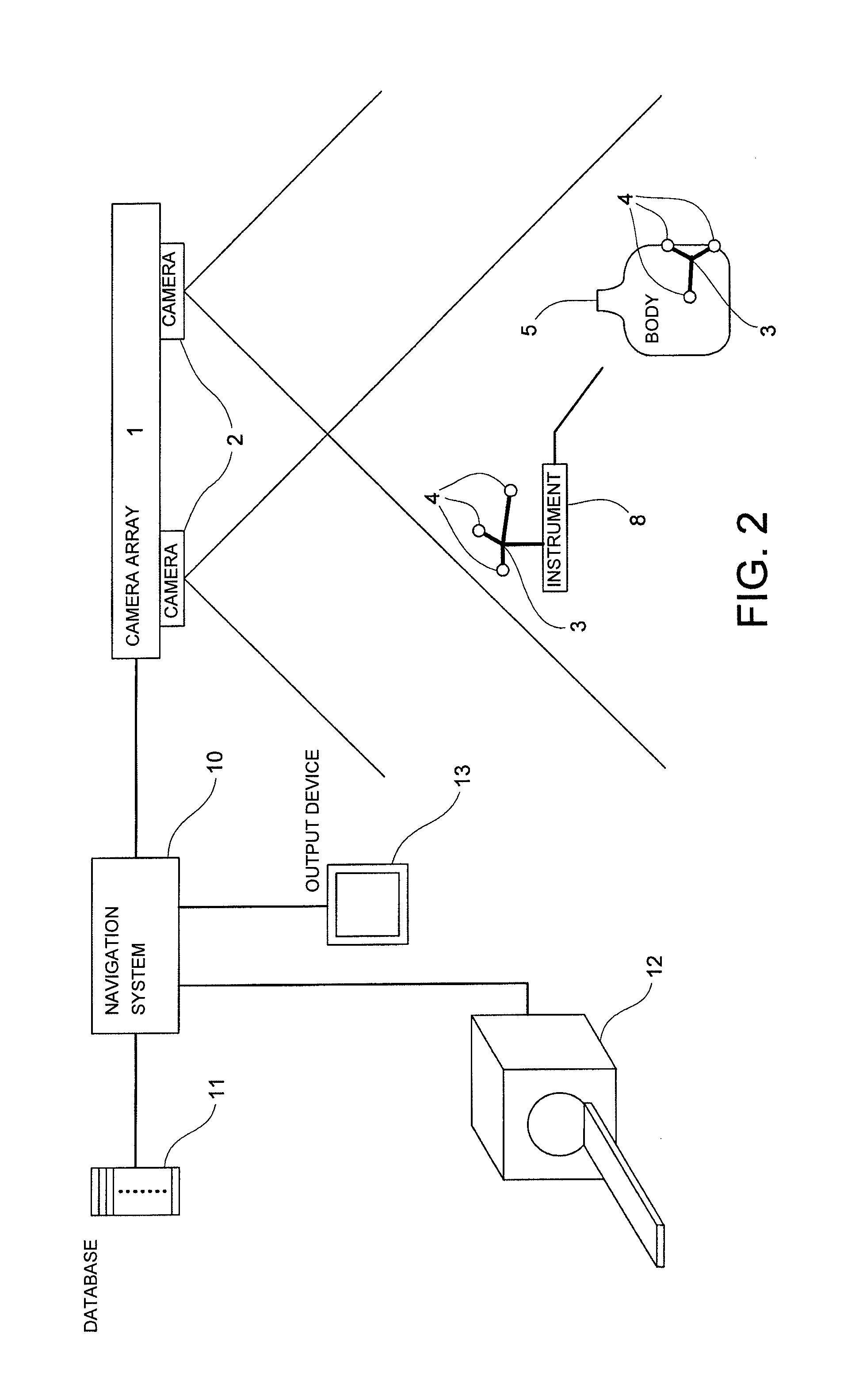Video tracking and registering
a video and registration technology, applied in the field of tracking and registration methods, can solve the problem that calculation errors can propagate through the entire tracking process
- Summary
- Abstract
- Description
- Claims
- Application Information
AI Technical Summary
Benefits of technology
Problems solved by technology
Method used
Image
Examples
Embodiment Construction
[0020]FIG. 1 shows an exemplary device for spatially locating, tracking and registering an object. The device includes a camera array 1 that comprises two cameras 2, such as hybrid cameras, for example, which can take recordings in both the visible light range and the infrared range. Instead of hybrid cameras 2, it is also possible to use cameras 2 that operate only in the visible light range. FIG. 1 also shows the body 5 of a patient on which a reference star 3 is arranged. The reference star 3 includes markers 4, such as passive, reflecting markers. An instrument 8, which also includes a reference star 3 comprising markers 4, can be used, for example, to examine the body 5.
[0021]The body 5 and the instrument 8 are preferably situated within the recording range of both cameras 2, such that the body 5 and the instrument 8 can be recorded from various positions. By means of recordings taken from different positions, a registration process can be performed with respect to a common coo...
PUM
 Login to View More
Login to View More Abstract
Description
Claims
Application Information
 Login to View More
Login to View More - R&D
- Intellectual Property
- Life Sciences
- Materials
- Tech Scout
- Unparalleled Data Quality
- Higher Quality Content
- 60% Fewer Hallucinations
Browse by: Latest US Patents, China's latest patents, Technical Efficacy Thesaurus, Application Domain, Technology Topic, Popular Technical Reports.
© 2025 PatSnap. All rights reserved.Legal|Privacy policy|Modern Slavery Act Transparency Statement|Sitemap|About US| Contact US: help@patsnap.com



